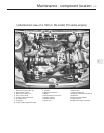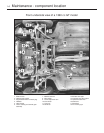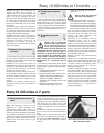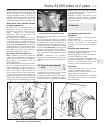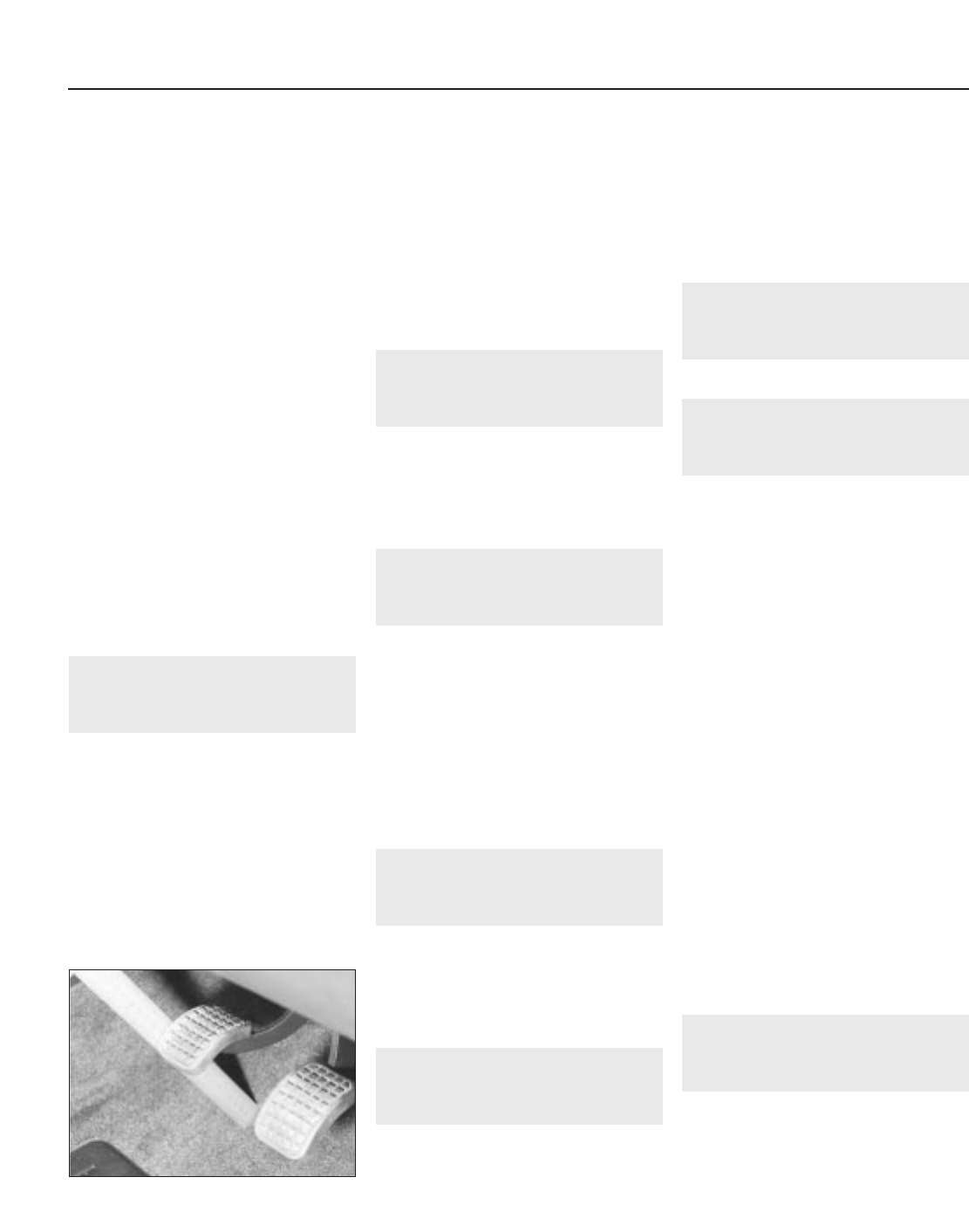
by moving the alternator by hand, or
tightening the adjuster bolt.
11 Tension the drivebelt as described in the
following paragraphs.
Tensioning
12 If not already done, proceed as described
in paragraphs 2 and 3.
13 Correct tensioning of the drivebelt will
ensure that it has a long life. A belt which is
too slack will slip and perhaps squeal.
Beware, however, of overtightening, as this
can cause wear in the alternator bearings.
14 The belt should be tensioned so that,
under firm thumb pressure, there is
approximately 5.0 mm of free movement at
the mid-point between the pulleys on the
longest belt run.
15 To adjust, with the upper mounting
nut/bolt just holding the alternator firm, and
the lower mounting nut/bolt loosened, lever
the alternator away from the engine, or turn
the adjuster bolt until the correct tension is
achieved. Rotate the crankshaft a couple of
times, recheck the tension, then securely
tighten both the alternator mounting
nuts/bolts. Where applicable, also tighten the
bolt securing the adjuster strap to its
mounting bracket.
16 Reconnect the battery negative lead.
17 Refit the plastic cover to the wing valance.
Refit the roadwheel, and lower the vehicle to
the ground.
10 Clutch pedal stroke
adjustment
1
1 The clutch pedal stroke adjustment is
checked by measuring the clutch pedal travel.
Before doing this, settle the cable by
depressing and releasing it a few times.
2 Ensure that there are no obstructions
beneath the clutch pedal then measure the
distance from the centre of the clutch pedal
pad to the base of the steering wheel with the
pedal in the at-rest position. Depress the
clutch pedal fully to the floor, and measure the
distance from the centre of the clutch pedal
pad to the base of the steering wheel (see
illustration).
3 Subtract the first measurement from the
second to obtain the clutch pedal travel. If this
is not with the range given in the
Specifications at the start of this Chapter,
adjust the clutch as follows.
4 On models fitted with the BH3
transmission, loosen the locknut and turn the
adjuster on the transmission intermediate
lever pushrod as necessary. On all other
models, slacken the locknut and turn the
adjuster nut on the end of the cable.
5 Check the pedal stroke again and make
further adjustments as necessary. When all is
correct, tighten the relevant locknut.
11 Seat belt check
1
Check the seat belts for satisfactory
operation and condition. Inspect the webbing
for fraying and cuts. Check that they retract
smoothly and without binding into their reels.
Check the seat belt mountings, ensuring
that all the bolts are securely tightened.
12 Lock and hinge check and
lubrication
1
1 Check that the doors, bonnet and tailgate
close securely. Check that the bonnet safety
catch operates correctly. Check the operation
of the door check straps.
2 Lubricate the hinges, door check straps,
the striker plates and the bonnet catch
sparingly with a little oil or grease.
3 If any of the doors, bonnet or tailgate/boot
lid do not close effectively or appear not to be
flush with the surrounding panels, carry out
the relevant adjustment procedures contained
in Chapter 11.
13 Rear brake shoe check -
models with rear drum brakes
3
Remove the rear brake drums, and check the
brake shoes for signs of wear or contamination.
At the same time, also inspect the wheel
cylinders for signs of leakage, and the brake
drum for signs of wear. Refer to the relevant
Sections of Chapter 9 for further information.
14 Rear brake pad condition
check - models with rear disc
brakes
1
1 Chock the front wheels, then jack up the
rear of the vehicle and support it on axle
stands (see “Jacking and vehicle support”).
Remove the rear roadwheels.
2 For a quick check, the thickness of friction
material remaining on each brake pad can be
measured through the top of the caliper body.
If any pad’s friction material is worn to the
specified thickness or less, all four pads must
be renewed as a set.
3 For a comprehensive check, the brake pads
should be removed and cleaned. This will
permit the operation of the caliper to be
checked, and the condition of the brake disc
itself to be fully examined on both sides. Refer
to Chapter 9 for further information.
15 Handbrake check and
adjustment
2
Refer to Chapter 9.
16 Underbody and fuel/brake
line check
1
1 With the vehicle raised and supported on
axle stands (see “Jacking and vehicle
support”), or over an inspection pit,
thoroughly inspect the underbody and wheel
arches for signs of damage and corrosion. In
particular, examine the bottom of the side
sills, and any concealed areas where mud can
collect. Where corrosion and rust is evident,
press and tap firmly on the panel with a
screwdriver, and check for any serious
corrosion which would necessitate repairs. If
the panel is not seriously corroded, clean
away the rust, and apply a new coating of
underseal. Refer to Chapter 11 for more
details of body repairs.
2 At the same time, inspect the treated lower
body panels for stone damage and general
condition.
3 Inspect all of the fuel and brake lines on the
underbody for damage, rust, corrosion and
leakage. Also make sure that they are
correctly supported in their clips. Where
applicable, check the PVC coating on the
lines for damage.
4 Inspect the flexible brake hoses in the
vicinity of the calipers, where they are
subjected to most movement. Bend them
between the fingers (but do not actually bend
them double, or the casing may be damaged)
and check that this does not reveal
previously-hidden cracks, cuts or splits.
17 Exhaust system check
1
1 With the engine cold (at least three hours
after the vehicle has been driven), check the
complete exhaust system, from its starting
point at the engine to the end of the tailpipe.
Ideally, this should be done on a hoist, where
unrestricted access is available; if a hoist is not
available, raise and support the vehicle on axle
stands (see “Jacking and vehicle support”).
1•12 Every 12 000 miles or 12 months
10.2 To check the clutch pedal stroke,
measure the clutch pedal travel as
described in the text




